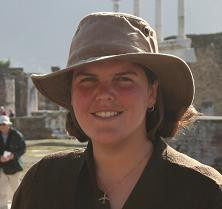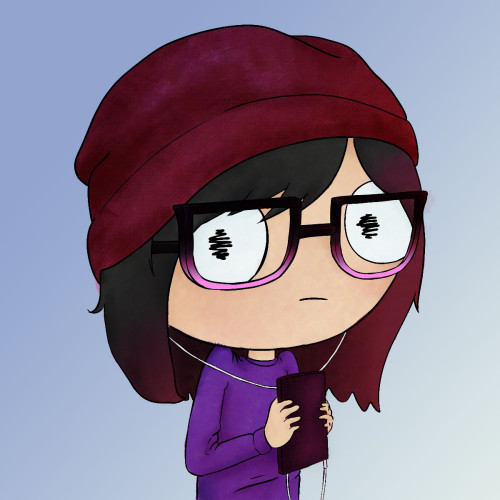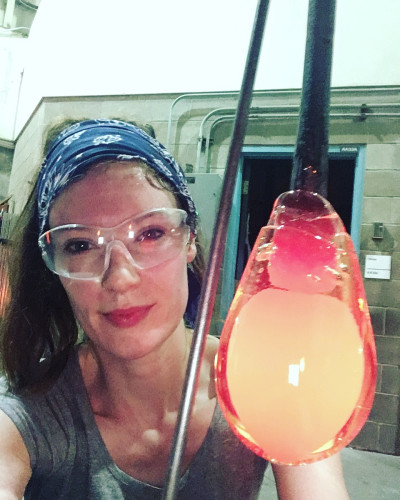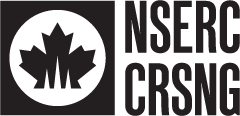Making blog

Today I had a videocall with Onna, the little inventor who drew the Fish Net, to show her the progress I have made with bringing her invention to life, and to get her advice and input on the remaining parts of the invention. I have a great time meeting Onna and her family. I really enjoy hearing about how motivated she was to come up with a solution to the environmental problem of overfishing and how she got the idea of using color in the net. Onna looks happy with how I am bringing her invention to life, and we brainstorm the next steps, for example what the boat should look like. I really enjoy meeting Onna, and seeing how she is already a maker herself and adding to her skills rapidly. Pretty soon, she will be bringing her own drawings to life.

Next comes one of my favorite parts, soldering everything together. I love soldering although it’s always a little bit nerve racking to take apart the working circuit on the breadboard and put it back together as I solder. Compounding my nervousness this time is that right at the moment when the project is taken apart in a hundred pieces, I hear that my videocall with the Onna, the little inventor who drew the Fish Net, will be in a couple days! I’ll have to pull a few late nights to make sure I have the invention in a decent state to show her on Friday! Fortunately, once everything is soldered, I plug it in and find out that this time is one of the rare times when everything works out the first time…
The last piece of electronic interfacing I need to do is to attach the fiber optics to the LEDs in a sturdy way. When I was researching this aspect online, I noticed that many makers have issues with that. I design a 3D printed bracket that fits the fiber optics snugly on the LED ribbon. Once the LEDs and fiber optics are mounted, it’s time for another “milestone” test! I plug everything in and I am very, very happy with the result… the net shine even brighter than I hoped, the colors are really vivid and I’m excited to show the invention in progress to Onna. As a last touch I add some quick felt fish to the servo as a prototype of what the animated fish could look like.

One quiet evening that I have just a couple hours to put into the project, I decide to work on the background. I cut out some cartoony waves with my scroll saw and paint the ocean a dark blue, getting darker the deeper it goes, to make sure the fiber optics stand out against the background. I make a huge mess in the process of course but I’m pretty happy with the result.

At this point I try out my pulley system, in hopes of animating a some of the fish in Onna’s design – some motion really makes the invention come alive. Unfortunately, I can’t get my pulley system to work… the elastics are either too tight, in which case axle’s friction is too high, or too loose, in which case the elastic slips. After getting some fresh air to clear my head after having a bit of a frustrating time, I decide to switch my approach and use some gears instead. I dig out some gears from an old lego set, the easiest solution at my disposal, and it’s very easy this time around to get my system working. Once that’s done, I’m able to mount everything to the frame and have a good test run of the electronic and mechanical parts of the system… fingers crossed… and everything works! It feels like I’ve reached a good milestone. Next week it’ll be time to make things more permanent.

This weekend, it’s time to make the wooden structure that will make this into a permanent object. Wood frames, boxes and so on used to be a part I dreaded when it came to making objects… although it can seem old fashioned to make things out of woo, it can be a very useful material, especially in situations that call for bigger structures than are feasible through 3D printing. Plus, wood is lovely . This all motivated me to take a woodworking class last year and although I have a lot to learn still, I feel better equipped to tackling this part of the project. I decided to make the frame around the invention out of pine, and use light presswood to make the inside surface. Although it’s probably, overkill, I decide to use dovetails to join the 4 sides together. Dovetails are kind of like puzzle pieces – they take a lot of skill and attention to detail, but they are beautiful and solid. Plus they give me an excuse to use my Japanese saws! These are special, very thin saws that cut through wood in no time. Along with a mallet, a chisel, and a good movie, the day zips by and I complete the frame.
Next, I use my router to make a thin slot on the inside to place the presswood backing, and drill out some holes to insert the fiber optics that make up the net, some dowels that will make the fish spin around, and some potentiometer knobs.

(English version below).
L’aspect essentiel de l’invention de Simon est le “scooper”. Note : je dois avouer que je n’ai pu trouver d’équivalent en français pour traduire de façon succincte ce mot (roue à auges à pales filtrantes?).
Le scooper de Simon est utilisé pour ramasser les déchets flottants près de la surface de l’eau de façon à les amener mécaniquement sur le pont du bateau. Dans le dessin de Simon, il met ensuite à l’œuvre deux matelots pour trier ces rebuts. Je me suis permis d’ajouter un élément à cette idée de façon à améliorer la productivité de l’opération et du même coup ajouter un élément d’animation dans le modèle à créer. C’est ainsi que j’aimerais introduire un convoyeur, relié par une poulie et courroie au scooper. Les deux éléments, scooper et convoyeur, seront donc actionnés par le même moteur CC miniature. J’ai encore une fois utilisé Fusion 360 pour le design de ces deux pièces mécaniques. Voir le dessin ci-joint. La structure principale de la roue à auges (le scooper) sera construite principalement en matière plastique PLA sur mon imprimante 3D. Cependant pour la surface des pales je prévois utiliser de petits morceaux que je couperai d’un matériel utilisé pour réparer des moustiquaires. Ceci permettra de laisser filtrer l’eau des déchets.
(Version française plus haut).
The main element in Simon’s invention is the scooper. The scooper is used to pick up floating waste near the water surface and discharge it on the deck of the boat. In Simon’s drawing, two sailors-operators are at work sorting the waste material coming onto the deck. I thought it would be interesting to add a bit to Simon’s idea. I wish to introduce a conveyor belt to facilitate the work of the two sailors; this would also add an element of animation to the model. The conveyor and scooper would be coupled with belt and pulleys and could therefore be powered from a single miniature DC motor. See the attached CAD drawing. The structural elements of the scooper would be fabricated on my 3D printer. For the filtering surfaces of the scooper I intend to cut and glue small pieces of fabric coming from a discarded window screen.

Next I needed a propeller. This was a perfect project for my 3D printer but first I needed to design it. I regularly use the computer CAD software Fusion 360 for designing various things in 3D although I must admit that I am far from being an expert.
It is actually quite exciting to be able to create various objects in three dimensions with just a few keystrokes on the computer keyboard.
For this propeller project, I was lucky: I was able to repurpose a fan design that I had done more than a year ago to repair my wife’s hair dryer. I remember spending a good part of an afternoon designing a new fan to replace the broken one. Since I had done a parametric design with Fusion 360 (defining the key dimensions not with fixed numbers but rather with variables), I was able, with just a few keystrokes, to reduce the original fan dimensions to the right scale for the propeller and adjust the hole diameter for the shaft to fit the miniature motor I had selected. I used white PLA on the printer and put a first coat of paint to match the color on Ava’s drawing. I turned out pretty good.

(English version below).
J’ai bien aimé l’idée de Simon d’un vaisseau qui collecte les déchets flottants à l’aide d’une roue à auges. Mon objectif est de produire un petit modèle animé d’environ 30cm de long. Pour débuter, le plus gros défi a été la coque (carlingue) du vaisseau. En effet, l’avant du vaisseau doit avoir une ouverture pour suspendre la roue à auge et a donc une forme très particulière. J’ai évidemment exploré le web pour essayer de trouver un jouet quelconque qui pourrait me procurer la coque désirée mais sans succès. La seule solution semble donc être de fabriquer cette coque, de même que l’ensemble du vaisseau en matière plastique PLA sur mon imprimante 3D.
J’utilise régulièrement le logiciel Fusion 360 pour la conception 3D de pièces de toutes sortes sans être pour autant un expert en conception. La coque d’un navire a une forme extrêmement complexe avec des courbes qui seraient très difficiles à réaliser de façon paramétrique (en utilisant des dimensions exactes, x y z et angles).
Cette invention de Simon m’a donc forcé à développer une nouvelle compétence en design 3D: la sculpture par ordinateur, une fonction entre autre disponible sur Fusion 360. Après avoir visualisé quelques vidéos YouTube et un peu de pratique, j’ai commencé à maîtriser cette façon excitante de concevoir des objets 3D aux formes très complexes mais de façon relativement facile.
J’ai donc réussi cette semaine à concevoir la coque du navire. Sculpter par ordinateur est très semblable à la sculpture avec pâte à modeler (voir photos). J’ai commencé en demandant à l’ordinateur de me fournir une des formes de base disponibles, soit un cube allongé et aux arêtes arrondies, construit de briques (j’ai choisi 64 briques : 4 sur le long, 4 de large, 4 en hauteur). Je sélectionne avec la souris certaines facettes ou arêtes et j’étire dans une direction choisie. Avec une telle série de sélections et étirements suivis de coupures j’ai ainsi réussi à créer la coque que je recherchais. Cette carlingue mesure 30cm; je la couperai en deux morceaux pour me permettre de l’imprimer sur mon imprimante 3D. Il me restera à la modifier légèrement pour créer des ancrages pour le pont, les moteurs et autres accessoires. Ouf, bien que tout est encore sur papier (et en mémoire d’ordinateur), je sens que le plus gros du défi a été franchi.
(Version française plus haut).
I really liked Simon’s idea of a vessel to collect waste material from the water surface using a paddle wheel with some screening material to filter out the water. My objective is to make a small animated model roughly 30cm long. Up front I could see that the biggest challenge would be with the hull of the vessel. The bow of the vessel needs to be somewhat open to house the paddle wheel. I surfed various web sites to see if I could get a toy boat to fit my needs but to no avail. I rapidly came to the conclusion that I need to fabricate the hull, as well as the other parts of the vessel with PLA plastic on my 3D printer.
I use Fusion 360 for my 3D design needs but I am far from being an expert designer. The shape of a hull for a boat is very complex with curves of various kinds that are very difficult to parameterize (describe with xyz coordinates or angles).
Therefore this invention from Simon forced me to develop a new skill in 3D design: sculpting. Luckily it is a function available on Fusion 360. So this week I watched a few YouTube videos and spent a couple of hours practicing before I started to master this exciting technique that will allow me to create artistic shapes that I could not produce otherwise.
I was then able to design the exact hull I was looking for. Sculpting on the computer is very similar to sculpting with play doh. I first selected in the available menu of basic starting shapes a sort of elongated cube with rounded edges and asked for 64 cells or bricks (4 along the length, 4 over the width and the height). I then select with the mouse certain faces or edges and drag those in a given direction. Following a series of selections and dragging motions in various directions, followed by deletion of various surfaces and thickening of the resulting envelope I was able to create the very hull I was looking for.
Wow ! Although things are still on paper (and in the computer memory), I feel that I have eliminated the biggest challenge.
I still have to fine-tune this hull to include anchors for the main deck and the things I want to install inside the ship. Once satisfied, I will also need to cut the final hull design in two pieces to allow the fabrication on my 3D printer.
Progress !!

I really liked Ava’s idea of using an underwater vessel to capture plastic and metal waste. Thinking about ways to make a working model, I quickly came to the idea of using a recycled 2-liter soda bottle. The bottle cap would house a miniature DC motor to drive a propeller and I would cut the bottom of the bottle and insert an acrylic window behind which would be the cockpit.

I spent this morning colouring the turtle. I coloured it according to Meghan's drawing. I also added a light to the lightbulb above the camera eye. I think it's coming together :)

The past week, I've actually been playing around with the design more. I'm much happier with this version and I think it better resembled Meghan's drawing. I made the turtle a lot wider since I noticed how thin I originally made it.
As for the claws, I made them more rectangular and only put 3 of them. I also added another section for the turtle's arms so that it could better reach the compartment in its shell. Speaking of the shell, I finally added the lid!
This version of the turtle is basically finished so I will be colouring it this week, then I'll rig it. In animation, when someone says they're rigging something, it means they're adding a skeleton to it. Adding a skeleton to a model (or a 2D drawing for a 2D animation) makes it easier for the model to move.

The past couple of months, I've been playing around with the turtle design. The first version was very rough since I wanted to play around with the design of the claws. Here's the work in progress of the first pass of the model! As you can see, unlike Meghan's design, there are 4 claws instead of 3, and they're more like a cylinder rather than a rectangle. I wasn't very happy with it so I decided to continue tweaking it so that the claws were more like how Meghan envisioned it.

Now that the electronics are working, I place an order for some more fiber optic cables, and switch gears to designing some of the 3D elements I am going to need to assemble the design. I am going to need a boat, fish, pulleys, a servo mounting bracket, some brackets to attach the fiber optics to the LEDs, some bushings and other attachments. When I first got my 3D printer, I didn’t realize that brackets would be my most common use for it! But it’s one of those things where being able to make a custom part is super handy. So, I get busy designing everything on Autodesk Fusion 360. For example, the video and pictures below show the design process for a bracket that will allow me to attach a dowel to the servo so that I can make all the fish spin.

Once I have the color selection working, I add a second knob, to mimic Onna’s design, that controls the overall brightness of the lights. Basically, it acts like a dimmer.
At this point, I have the basic electronics of Onna’s design figured out, and I can start to think about a few enhancements. Dominic suggested maybe the fish in Onna’s sketch could move, and I think that’s a great idea – I can do that with a servo. I find a continuous rotation servo in my parts organizer. I brush up a bit on how to power up servos and how to control them with Arduino, but it comes back pretty fast. I solder up a little power supply for it, and hook everything up. It works as intended! The prototype of the electronic “guts” is pretty much done, and it looks like spaghetti, but I’ll clean it up later. I’ll also add a few pulleys later so that with that single one servo, I can spin around lots of fish. For now it just spins a little piece of tape so that I can adjust the speed.

My color-cycling program is fun and might be useful as a demo mode when the invention is on display, but Onna’s invention calls for two knobs that control the color and the brightness, so my next step is to modify the Arduino program to make sure a human can control the colors in that way. I am going to use two knobs like Onna shows on her picture – the knobs are called potentiometers, and basically when you turn them, they let more or less current through them. The Arduino can (indirectly) detect how much current is going through. I am going to use this principle to make the Arduino control the colors and brightness.
With a little bit of internet sleuthing, I find a neat color chart that shows the red, green and blue values of the twelve primary, secondary and tertiary colors: https://learn.sparkfun.com/tutorials/lilypad-tri-color-led-hookup-guide/all#custom-color-mixing-with-code . This is very handy! I modify my program so that it splits the “knob” into 12 areas. Once the Arduino detects which area the knob is in, it selects one of the 12 primary, secondary and tertiary colors and creates it by lighting up the correct combination of red, green or blue.

My next step is to test out the fiber optic and see if I am happy with the side glow effect. I test it with a few light sources and I realize that I am going to need something very bright to get the effect that I want to have – and I have just the thing. I think the RGB LED strip that I used for the Suncube is going to be perfect for this application. So, I gather up all the supplies I need… The RGB LED strip (a long ribbon of lights, that can light up any color of the rainbow), an Arduino (the “brain” that is going to control everything), and some transistors and resistors to help power everything. I make a test circuit and pretty quickly, I can light up the RGB strip. After some experimentation, when I hold up the fiber optic to one of the LEDs on the strip, I get a really nice side glow effect!

Fiber optics is the main thing that will be new to me in this project, so I start with that. I research fiber optics online a bit; most of the information about making with fiber optics seems to come from people who are using them to make clothing, which is pretty cool. Fiber optics use reflection to carry light from one end to the other, when I studied engineering in university, they were a big deal for telecommunication and computing. In those scenarios, you want to have as little "light leakage" as possibly through the sides of the fiber optic, but, in my research today I learn that there are some fiber optics with "side glow" that leak a bit of light on their sides, making the whole fiber glow. I think that will be even cooler for this project... I love the idea of a glowing net. I order a sample to try it out. Once it gets here, It's like a plastic spaghetti strand. I try it out against a RGB (color-changing) LED and it has a pleasant glow

I found out that I was assigned "The Fish Light" by Onna as the invention I'm going to bring to life. I'm very pleased because Onna made a very clear plan for her invention - maybe she'll be an engineer when she grows up! I think it will be a very colorful and fun invention to look at. Another reason that I really like this invention is that it hits the sweet spot - I have a good idea of how I will make the main features of it, so it's not too intimidating... but there are a lot of opportunities for creativity and bonus features, once I get the basics down. I think it's going to draw from some of the electronics that I have learned from my previous invention projects - for example RGB LEDs I learned to use for the Suncube https://www.littleinventors.org/ideas/the-sun-cube/details#tangible .
The first step when you get assigned an invention is to have a chat with Dominic, the chief inventor. We brainstorm some ideas on how to make the Fish light into a beautiful object - Dominic suggests maybe adding some movement to it and I really like that idea. I run an idea by him - making the fish net out of fiber optics - and he really likes it. Fiber optics isn't something I have worked with in the past but I'd like to explore them a bit. After our conversation I draw a first sketch of what the idea could look like if I made it with fiber optics and incorporated some movement in the fish.

I'm excited that it's finally time to choose my next project with Little Inventors! I've been keeping an eye on the inventions as they have been submitted by kids across Canada, and this time, for even more fun, I roped my dad into making an invention too. My dad got me into making in the first place - when I was a kid he showed me electronics, woodworking, and all kinds of things. He's always a sounding board for my projects, especially when they involve electronics, so I'm happy that he will also be contributing his own project this time. We both had a chance to look over the short listed ideas and pick our first choices. I wonder which one I'll be assigned to.

Here are some shots of Eric and I discussing the project. He created the shark predator design in record speed!
